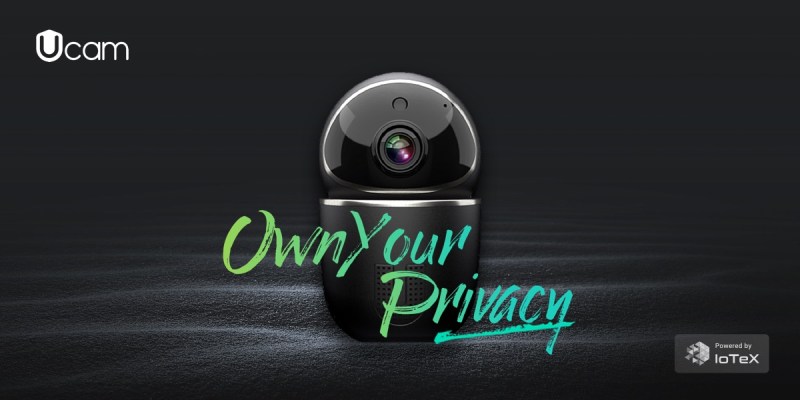VentureBeat: What are you finding there as far as how much activity is going on?
Grobman: There’s a lot of activity, especially in academia and the research community. Similar to some of the other points, it’s difficult to know how much in the wild is currently focused on using some of these adversarial techniques. But we always see things start in the research domain and then graduate to active exploitation, which is why it’s important for McAfee and other responsible companies in the industry to get in front of this and make sure that when attacks become more prevalent, our technology is ready to defend against those.
VentureBeat: Can you figure out what some of the danger is there, if those attacks succeed? What happens to the data they’re attacking?
Grobman: It’s mostly about circumventing what AI is intended to do. If you think about a typical cybersecurity use case, a file that’s never been seen before is analyzed by an AI model in order to classify it as malicious or benign. Using an adversarial AI technique would be putting specific characteristics into the file such that it confuses the model into falsely classifying it as benign, even if it is malicious.
June 5th: The AI Audit in NYC
Join us next week in NYC to engage with top executive leaders, delving into strategies for auditing AI models to ensure fairness, optimal performance, and ethical compliance across diverse organizations. Secure your attendance for this exclusive invite-only event.

Above: A few avatars generated by Neon.
VentureBeat: I followed the creation of some of the startups in this space, like Deep Instinct in 2017. They got some awards from Nvidia, and investment as well. Some things they said made sense. I wondered how broad their approach has become across the industry. I know there were a lot of companies that were raising money on the promise that if you put AI into cybersecurity, you’d get something much better than traditional approaches. Traditional security was more reactive — you find out something bad is out there and you put it in your database and protect against it. Whereas the AI part was meant to be used to get ahead of that and predict things that you’ve never seen before.
Grobman: What we’ve found is that the best effectiveness is combining AI with some traditional threat research, threat intelligence capabilities. If you combine threat intelligence and AI, you can do much better than either on their own.
They each have fundamental problems. If you just do threat intelligence, meaning that you’re going to look for threats based on your understanding of the threats that exist in the world, the problem with that is new threats pop up all the time. McAfee sees 500 new pieces of malware every minute. Trying to stay ahead of all the new threats is inherently difficult. At best, you’ll be able to detect about 90% of the threats if you only do your detection based on threat intelligence.
On the flip side, if you only use AI, you’re basically making the AI model decide something on those 90% of the scenarios where you know the answer. If you think about it, the good side of threat intelligence is, for the things you know, you have an almost perfect detection rate. If you know something is bad, you really know it’s bad. It’s a challenge about missing things. With AI, why would you take something you know is bad and make your model do an assessment on it?
The good news with AI is that it can detect things you’ve never seen before. But in order to get high detection rates, you generally have a high false-positive rate. You get a lot of false detections in return for that higher detection rate. The magic that McAfee has found is if you put both threat intelligence and AI together, you can get a much better detection rate and a lower false-positive rate than either technology working on its own.
Here’s why: If, for anything that you have in your threat intelligence perspective, you classify it using threat intelligence and then only things that are unknown do you pass to your AI classifiers, that puts you in a mode where you’re getting the two techniques to work together to provide an outcome that’s better than either one on its own.
VentureBeat: As far as how many people have the capability to do that combination — the traditional folks had the traditional technology. The question is, how many are able to pick up the AI part and do it well? I guess you’d argue that you have.
Grobman: We’ve done it well. What I’ll say is it’s not just about having great AI technology. It’s about having good data and good visibility as to what’s happening in the world. One thing that’s unique to McAfee is we have a billion threat sensors looking at threat telemetry from a wide variety of vantage points. We look at threat telemetry from devices, from networks, from organizational perimeters, and even the cloud, with our CASB [cloud access security broker] solution. Using that threat-sensing, threat telemetry information to help build our models is one of the key things you need beyond just understanding how to use AI effectively.

Above: IoTex’s Ucam is an encrypted, blockchain-based security camera.
VentureBeat: As far as where you picked this up, when deep learning started becoming a real thing, how quickly were you jumping on that?
Grobman: We use a wide range of AI techniques. Some of it is engineered learning. Some of it is deep learning. But we’ve been focused on this for almost five years now. It’s not that there was a big bang moment. The technology has evolved over a number of years. We’re looking at it as a tool in order to meet an objective, as opposed to AI in and of itself being the objective.
It’s a bit like — if you buy a car, what you really care about is that it goes zero to 60 in four seconds and doesn’t pollute the environment. The fact that it’s based on a lithium-ion battery that has microcells to mitigate the risk of fire — unless you’re a real nerd, you don’t really care about the implementation. You care about what it does for you. We’re in a similar situation. Our customers care about our ability to defend them from threats. Behind the scenes, we’ve found that AI is a powerful technology that helps us do that more effectively. But in general, customers don’t really care about how we’re doing it, as long as they get the outcome they desire.
VentureBeat: Did you find that you had to do a lot of hiring around AI to make this happen, rather than the traditional engineers you already had?
Grobman: Yeah, it’s a combination of both. We’ve hired a good number of data scientists. We have dedicated data science teams. At the same time, we’ve done a lot of cross-training throughout the company so that engineers that are not data scientists have a comfort level and are able to use the technology effectively.
VentureBeat: How done is this part? How far do you feel you have to go until you reach a full realization of AI cybersecurity integration?
Grobman: It’s already fairly ubiquitous in the industry. What’s going to happen, though, is the threat landscape will continue to evolve and become more sophisticated, which will continue to put pressure on the need to have more sophistication in the way we detect threats. I don’t necessarily see an endpoint, as much as a natural evolution of finding and evolving the best technology as the threat landscape continues to change and evolve as well.
VentureBeat: As far as the boom and bust in AI cybersecurity venture investment, did we see that? Has that played out?
Grobman: It’s a good question. I don’t know that I have a quantitative answer. Anecdotally, it seems like there was a lot of hype a couple of years ago. I don’t know that I see the same level of intensity because AI has become so commonly used across the tech industry. But I don’t know that that’s more than an anecdotal observation.
VentureBeat: In the future of cybersecurity, how big a part do you think this is versus other developments on your radar, other things you have to get to?
Grobman: The technology will be used in new ways. Think about it this way: Part of what we’re focused on is how we solve the existing problems we have better, and then the second part is how we take new approaches to defend against threats using entirely new techniques. AI can help us in both of those areas.
For example, in the first one, we can use improvements in AI to better detect malicious behavior and malicious content. At the same time, we can use AI to answer questions that we’ve never been able to answer before, such as: Is an attack something that’s crafted to focus on a specific organization? Is it a targeted attack? We’re able to look at using AI to detect the formation of a new campaign before someone realizes it’s a campaign. There are these questions we can now answer by using AI, and that’s a lot of what the future will be about.

Above: Cybersecurity
VentureBeat: I also wonder if blockchain has come to have a lot of importance. People pointed to it as a technology that could lead to assurances about identity. If you brought that in, then you could be more certain that something someone was giving you was verifiable. But the other problem I saw related to it was related to ransomware, where ransom payments were becoming untraceable. You had both the good actors and the bad actors using blockchain in some way.
Grobman: That’s exactly right. Blockchain is very well-suited for cryptocurrencies. Then you look at whether cryptocurrencies are good [or] are bad, and it’s really both. They make it so that individuals that don’t have the means to work with traditional financial institutions and instruments, such as in third-world countries, can work with a currency. The flip side is it’s a catalyst to make ransomware much more effective to operate. It provides criminals with a means for their victims to pay them directly with a currency that’s difficult to trace.
The broader comment on the blockchain is that it’s probably a little over-positioned. Blockchain, at the end of the day, uses well-understood cryptography principles and primitives that we’ve used for years. Those principles are very good at being able to digitally sign or encrypt information. I don’t think that blockchain per se is the holy grail.
VentureBeat: Is there anything else you think of as that holy grail?
Grobman: In cybersecurity defense, I think the only holy grail is that there is no holy grail. Whenever the industry has thought that some technology was going to be the game changer, shortly thereafter adversaries have figured out ways to work around it. I’m very cautious about thinking of anything as a holy grail, at least in cybersecurity.

Above: Finding passwords
VentureBeat: As far as what’s going on right now, Zynga had their Words With Friends database hacked, with almost 200 million personal records obtained there. That was just in the last quarter.
Grobman: Some prescriptive guidance for consumers — if you’re signing up for anything, the most important thing is to have a unique password. Zynga is a good example of that. Even though there’s nothing of tremendous value to steal from Zynga, if somebody used the same login and password for Zynga as they did for their bank, the adversary can take that information and get access to things that are valuable. If users are accessing recreational types of websites or other internet capabilities, either use a password manager or use unique passwords to make sure that if there is a breach, the stolen information can’t be used for more than the site that was impacted.
VentureBeat: Is there anything else in recent news in the space that’s caught your attention?
Grobman: A couple of things. 2019 was a year that ransomware continued to be major problem. We saw a campaign called Sodinokibi, which was using an affiliate business model. You think about — in the business world there are all sorts of franchise business models where one company has partners or affiliates that sell or execute their services, and there’s profit-sharing. We now see that approach in cyberattacks as well. With Sodinokibi, one group created the underlying ransomware technology, and then they made it available to different groups to affect individuals and organizations. When the ransom was paid, there was profit-sharing. We’ve also seen, in that particular case, interesting behaviors like — it was engineered to not impact certain parts of the world. It looked at the installed language pack on a machine. If it was a certain set of languages, it would not execute.
We saw a lot of focus on state and local governments being targeted by ransomware. We also saw 2019 as the year where we started to see attacks on financial institutions occur through the cloud. There was a major breach back in the summer, where it was a cloud infiltration leading to that. 2019 was a pivotal year in where these trends have gone.


